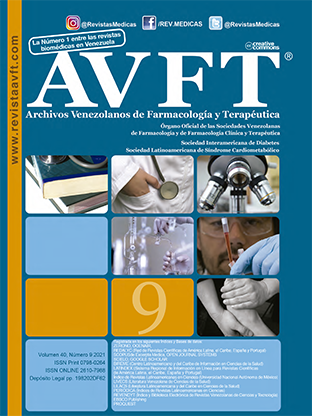Explaining the status of clinical nursing education: a content analysis study in Iran
Keywords:
clinical education, nursing, educational challenges, IranAbstract
Introduction: Challenges and problems of clinical nursing education are the most important factor in determining the quality of nursing students' education. Frequent assessment of the quality of nursing education without considering the existing challenges is an ineffective activity in analyzing the situation of nursing education.
Objective This study aimed to explain the status of clinical nursing education at Jahrom University of Medical Sciences in Iran.
Methodology: A qualitative design based on the conventional content analysis approach was used. This study was conducted at the X University of Medical Sciences in 2018-2019. Data were drawn from 10 semi-structured focus group interviews with 110 nurses, head nurses, instructors, and students. Purposeful sampling was performed. The time and place of the interviews were chosen according to the participants. The interviews were analyzed by Graneheim and Lundman method by MAXQDA software.
Results: 626 in-vivo codes, 46 primary codes, 8 subcategories (lack of attention to the evaluation process, non-participative evaluation, low staff educational cooperation, ineffective instructors, non-educational clinical space, student educational deficits, student drown in the clinic, non-participatory planning), and 3 main categories (planning challenges, implementing challenges and evaluation challenges) were obtained.
Conclusion: Educational leaders must shift to three areas; democratic planning, wise implementation with frequent monitoring, and the use of modern clinical evaluation methods (Based on the participation of learners and other stakeholders).
Downloads
References
Raofi R, Talaghani F, Hojat M, Shahriari M. A comparative study of continuous nursing education system in Iran and America. IIOAB Journal. 2016;7:196-203.
Tehrani TH, Ebadi A, Mokhtari Z, Gheshlagh RG. Psychometric Properties Of The Persian Version Of The Uncivil Behavior In Clinical Nursing Education Among Nursing Students. Advances in Medical Education and Practice. 2019;10:869.
Kalyani MN, Jamshidi N, Molazem Z, Torabizadeh C, Sharif F. How do nursing students experience the clinical learning environment and respond to their experiences? A qualitative study. BMJ Open. 2019;9(7):e028052.
Yazdannik A, Yousefy A, Mohammadi S. Exploring the dominant discourse of baccalaureate nursing education in Iran. Iranian journal of nursing and midwifery research. 2017;22(1):19.
Montaseri Ma, Hojat M, Jahromi Mk. Comparison between current and ideal condition of educational justice from the students’ viewpoints at Jahrom Nursing and Paramedical School. Journal of Advances in Medical Education & Professionalism. 2014;2(1):39.
Pashmdarfard M, Shafarood N. Factors affecting the clinical education of rehabilitation students in Iran: A systematic review. Medical Journal of the Islamic Republic of Iran. 2018;32:114.
Raiesifar A, Firouzkouhi M, Fooladi M, Parvizy S. Sociopolitical development of the nursing profession in Iran: A historical review. Journal of medical ethics and history of medicine. 2016;9.
Graneheim UH, Lundman B. Qualitative content analysis in nursing research: concepts, procedures and measures to achieve trustworthiness. Nurse education today. 2004;24(2):105-12.
Lincoln YS, Guba EG. Naturalistic inquiry. Newberry Park. CA: Sage; 1985.
Farzi S, Shahriari M, Farzi S. Exploring the challenges of clinical education in nursing and strategies to improve it: A qualitative study. Journal of education and health promotion. 2018;7.
Sokhandani M. The viewpoint of nursing and midwifery students about characteristics of effective clinical instructors. Interdisciplinary Journal of Virtual Learning in Medical Sciences. 2020;3(1):31-40.
Bvumbwe T, Mtshali N. Nursing education challenges and solutions in Sub Saharan Africa: An integrative review. BMC nursing. 2018;17(1):3.
Jamshidi N, Molazem Z, Sharif F, Torabizadeh C, Najafi Kalyani M. The challenges of nursing students in the clinical learning environment: A qualitative study. The Scientific World Journal. 2016;2016
Abbasi M, Rabiei L, Masoudi R. Experience of nursing students about the barriers to patient education: a qualitative study in Iran. Korean Journal of Medical Education. 2018;30(4):327.
Abdolrahimi M, Ghiyasvandian S, Zakerimoghadam M, Ebadi A. Iranian nursing student–patient health communication in medical-surgical wards. Iranian journal of nursing and midwifery research. 2018;23(2):136.
Lotfi M, Zamanzadeh V, Valizadeh L, Khajehgoodari M, Ebrahimpour Rezaei M, Khalilzad MA. The implementation of the nursing process in lower‐income countries: An integrative review. Nursing Open. 2020;7(1):42-57.
Tsuruwaka M. Consulted ethical problems of clinical nursing practice: perspective of faculty members in Japan. BMC nursing. 2017;16(1):1-9.
Salehian M, Heydari A, Aghebati N, Moonaghi HK. Faculty-student caring interaction in nursing education: An integrative review. Journal of Caring Sciences. 2017;6(3):257.
Rakhudu MA, Davhana-Maselesele M, Useh U. A model of collaboration for the implementation of problem-based learning in nursing education in South Africa. Curationis. 2017;40(1):1-10.
Aarabi A, Cheraghi MA, Ghiyasvandian S. Modification of nursing education for upgrading nurses’ participation: a thematic analysis. Global journal of health science. 2015;7(4):161.
Keys KL, Zhou H, Lange K. Proximal Distance Algorithms: Theory and Practice. J Mach Learn Res. 2019;20(66):1-38.
Martínez-Linares JM, Martínez-Yébenes R, Andújar-Afán FA, López-Entrambasaguas OM. Assessment of nursing care and teaching: A qualitative approach. International journal of environmental research and public health. 2019;16(15):2774.
Rambod M, Sharif F, Khademian Z. The impact of the preceptorship program on self-efficacy and learning outcomes in nursing students. Iranian journal of nursing and midwifery research. 2018;23(6):444.
Oermann MH, Shellenbarger T. Clinical Education in Nursing: Current Practices and Trends. Clinical Education for the Health Professions: Theory and Practice. 2020:1-20.
Torabizadeh C, Ghodsbin F, Javanmardifard S, Shirazi F, Amirkhani M, Bijani M. The barriers and challenges of applying new strategies in the clinical evaluation of nursing students from the viewpoints of clinical teachers. Iranian journal of nursing and midwifery research. 2018;23(4):305.
Labrague LJ, McEnroe‐Petitte DM, D'Souza MS, Hammad KS, Hayudini JNA. Nursing faculty teaching characteristics as perceived by nursing students: an integrative review. Scandinavian journal of caring sciences. 2020;34(1):23-33.
Jasemi M, Whitehead B, Habibzadeh H, Zabihi RE, Rezaie SA. Challenges in the clinical education of the nursing profession in Iran: A qualitative study. Nurse education today. 2018;67:21-6.
Bonten TN, Rauwerdink A, Wyatt JC, Kasteleyn MJ, Witkamp L, Riper H, et al. Online Guide for Electronic Health Evaluation Approaches: Systematic Scoping Review and Concept Mapping Study. Journal of medical Internet research. 2020;22(8):e17774.
Downloads
Published
How to Cite
Issue
Section
License
Copyright (c) 2023 AVFT – Archivos Venezolanos de Farmacología y Terapéutica

This work is licensed under a Creative Commons Attribution-NonCommercial-NoDerivatives 4.0 International License.




